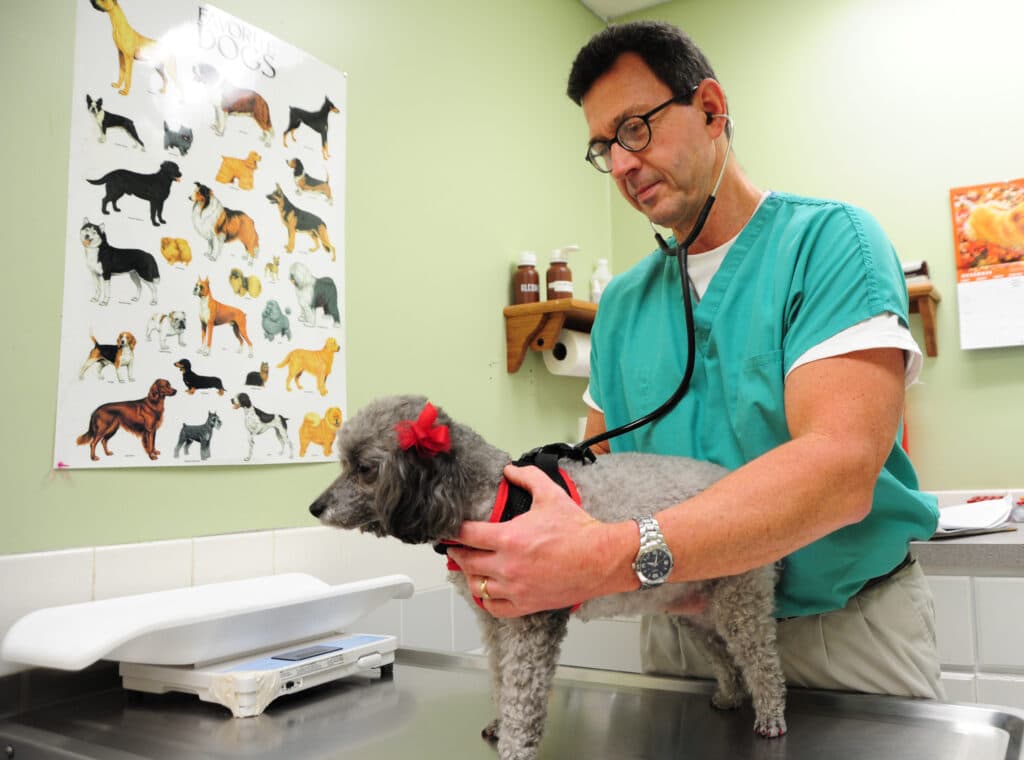A new and unlikely front is opening up in America’s battle against opioid abuse — the vet’s office.

Public health officials across the country have been dealing with an unprecedented rise in opioid abuse. Thousands of people have become addicted to heroin and prescription medications like Percocet and Oyxcontin in recent years. And as doctors become more cautious before prescribing opiate-based drugs to prevent abuse, addicts are looking to other sources including drugs meant for animals.
Some people assume that veterinarians will be more likely to prescribe the potent drugs, lying to doctors about their pets being injured. In one extreme case in 2014, a Kentucky woman was convicted of abusing her dog to obtain a prescription.
“We would never think of people using or abusing these drugs,” Dr. Duffy Jones, owner of Peachtree Hills Animal Hospital in Atlanta, Georgia, told CBS News. “We typically believe what people tell us and we don’t want a pet in pain, but now we’re taking a bit more of a critical look at exactly what the client is like and what the dog is like — does it fit?”
Some states such as Maryland are requiring veterinarians and animal hospitals to participate in drug monitoring programs and others are providing to training to spot abuse.
Veterinarians are advised to gauge the behavior of the pet owner in addition to the animal. Many veterinarians also now insist on seeing an animal before writing a prescription.
“When they come in, they ask for drugs by name, that’s kind of the first red flag,” Dr. Eli Landry told KFOR, a TV station in Oklahoma City, Oklahoma. Commonly abused pet medications include the painkiller Tramadol and anti-anxiety medications such as Xanax and Valium.
Pet medications are usually similar to ones used by people but are often prescribed at much lower doses. Other warning signs for veterinarians include multiple requests for refills over short period of time and pet owners asking for additional pills, claiming to have lost or discarded the drugs by mistake.
The Massachusetts Department of Public Health is planning to create to create pamphlets that outline the dangers of pet medications similar to those distributed with opioids prescribed to people.
Susan Curtis, executive director of the Massachusetts Veterinarian Medical Association, cautioned in an interview with The Boston Globe that the problem is still fairly rare.
“We’re being proactive,” Curtis told the newspaper. “We’re trying to close the door.”
However, veterinarians are just one part of the solution when it comes to preventing the abuse of pet medication. Addicts sometimes steal medications from friends or family members who have been properly prescribed the drug. That pattern can be repeated with pet medication and sometimes go unnoticed, experts say.
Here are some tips to safely handle drugs meant for pets:
- Keep track of your pet’s medication by keeping a written inventory of the drugs.
- Always keep the medication in its original container along with any additional safety information about the drug.
- Store the drugs in a secure, locked location such as a drawer or a small safe. Avoid storing medications in places that can be exposed to changes in heat and humidity like a bathroom cabinet.
- Properly dispose of your pet’s medication when it is no longer needed. Talk to your pharmacist about how to do this. Different drugs require different methods.
 Translate
Translate